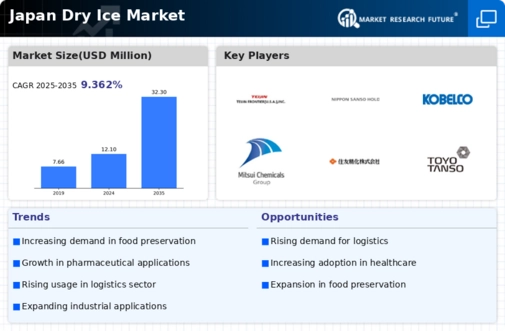The Japan Dry Ice Market exhibits a dynamic and competitive landscape, primarily driven by the growing demand for dry ice across various industries such as food and beverage, pharmaceuticals, logistics, and electronics. With a notable emphasis on safety and sustainability, companies within this sector are continually innovating to meet customer requirements while optimizing their production processes. The industry is characterized by a mix of established players and emerging startups striving to capture market shares through strategic collaborations, technological advancements, and enhanced service offerings.
Overall, the competitive insights reflect an environment where companies aim to differentiate themselves through quality, efficiency, and customer-centric solutions. Teijin Limited stands as a prominent player within the Japan Dry Ice Market, leveraging its robust industrial capabilities and extensive networks to strengthen its market presence. Known for its commitment to sustainability, Teijin Limited actively incorporates eco-friendly practices into its dry ice production processes, which serves to attract eco-conscious clients. The company benefits from its established reputation in the chemical sector, allowing it to utilize advanced technology and superior manufacturing techniques that result in high-quality dry ice products.
Additionally, Teijin Limited's strong distribution channels ensure timely delivery and access to various market segments, ranging from pharmaceuticals to logistics, further solidifying its position in the competitive landscape. Maruzen Petrochemical, another key participant in the Japan Dry Ice Market, emphasizes its diversification strategy by offering a wide range of chemical products along with dry ice solutions. The company’s market presence is supported by its efficient production capabilities and focus on continuous improvement, which enables it to cater to various industrial needs in Japan.
Maruzen Petrochemical's strengths lie in its strong relationships with key clients and an agile operational model that adapts to changing market conditions. The company also pursues opportunities for growth through strategic mergers and acquisitions, enhancing its capacity and technological edge in dry ice production. By positioning itself as a reliable supplier, Maruzen Petrochemical maintains a competitive advantage in a sector increasingly focused on innovation and customer responsiveness.




















